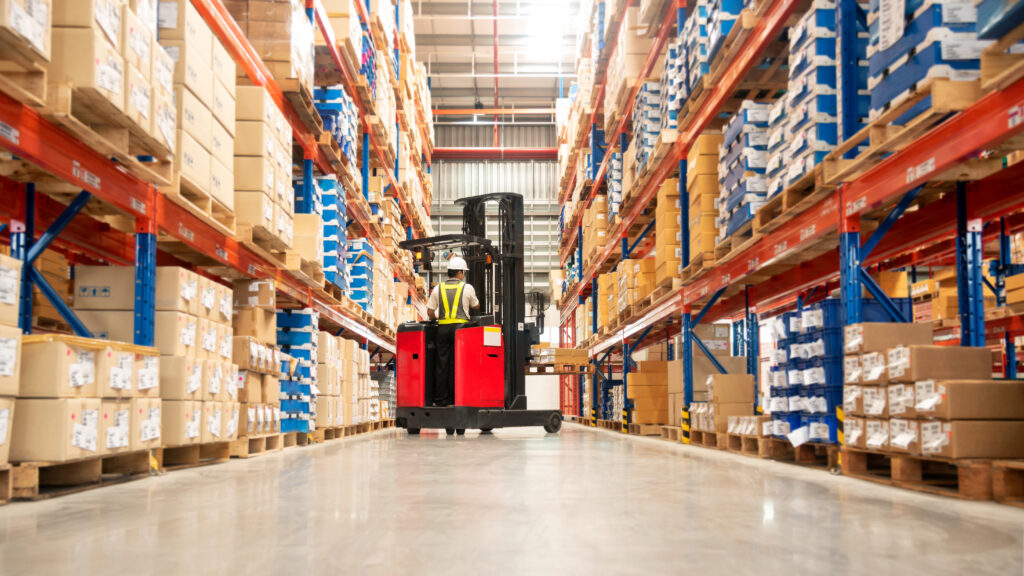Introduction
Radio Frequency Identification (RFID) is broadly used for a large number of purposes throughout completely different sectors and has grow to be more and more widespread in industrial environments. The best software areas for RFID embody asset identification and monitoring, entry management, and materials movement. Implementing an entire RFID system gives real-time, correct visibility of property throughout a whole provide chain. This creates countless prospects for information monitoring and administration.
RFID know-how has been utilized for many years, however latest advances in tag design and manufacturing have considerably lowered prices – serving to to gas its adoption in all kinds of use circumstances and industries. Over time, the know-how has developed by way of its options and capabilities, and it represents some of the quickly rising segments in right now’s computerized identification information assortment {industry}. RFID tags might be produced in very small kind components, permitting them to be embedded in all kinds of objects. Tags are additionally way more strong and may function in harsh environments the place they might be subjected to excessive temperatures, publicity to liquids, abrasions, vibrations of close by machines, and many others.
RFID has established itself as one of many core Auto-ID applied sciences within the international manufacturing and logistics sector. However, there are different finding applied sciences which have developed on the identical time which allow particular purposes and use circumstances due to their distinctive strengths. This poses the query: is there a strategy to mix and combine these applied sciences to facilitate the very best information technology situations alongside all the provide chain and intralogistic situations?
The Challenge
To allow efficient and sustainable options for difficult location-based use circumstances within the industrial world, know-how from specialists within the discipline is required. They require a deep understanding of the processes and necessities of the person use circumstances, the restrictions and capabilities of the completely different applied sciences concerned, and the strengths and weaknesses of {hardware} elements.
RFID excels in some ways, however it isn’t an “out-of-the-box” or “plug & play” know-how. It is a zone-based detection/identification know-how with a spread of 10cm to 10m relying on native infrastructure. The know-how has been tailored and applied in a plethora of purposes, corresponding to manufacturing automation and course of management in sensible factories, asset monitoring and monitoring in logistics, and entry management safety in warehouses.
RFID infrastructure {hardware} must be put in and calibrated on-site by specialists to make sure excessive precision and full performance. Areas requiring extra protection require extra identification factors. Conversely, areas with much less identification factors will end in much less transparency. This is the principle cause why RFID is used extra prominently for identification somewhat than localization functions – there are too many black holes between studying factors. RTLSs, corresponding to UWB, BLE, and GPS, are higher fitted to use circumstances that require steady monitoring of objects in real-time.
These applied sciences have one essential trait in widespread: they require far much less and even no infrastructure in any respect. Determining probably the most appropriate and economical know-how is often performed through the blueprint part of a undertaking. Several components play into this, together with the general undertaking necessities, anticipated working and upkeep prices, volumes, and the potential for future enlargement(s) of the use case. Active positioning applied sciences are very exact, however not each use case requires this stage of precision. On the opposite hand, these programs allow so many use circumstances that they allow important synergies. Unfortunately, tags are nonetheless very costly and are restricted by battery life. This is one key power of RFID. Therefore, why not mix the strengths of particular person applied sciences?

The Solution
While RFID know-how has distinctive advantages, it additionally has sure drawbacks – as does every other finding know-how utilized in isolation. Employing a holistic, future-oriented mixture of applied sciences is the one strategy to obtain an optimum economical and purposeful outcome. The important half is to make sure straightforward integration and interoperability throughout completely different applied sciences, in addition to interoperability throughout the answer and {hardware} suppliers.
Through years of expertise with location-based providers and finding applied sciences, it has grow to be clear that the mix of RFID and RTLS applied sciences excel for a lot of use circumstances. RFID can determine tons of of tags shortly and reliably in a brief vary. RTLS applied sciences can find objects with distinctive precision over a protracted vary inside out of doors and indoor environments. To illustrate this additional, considered one of our earlier weblog articles centered on a joint resolution the place RFID and GPS have been mixed to successfully streamline asset monitoring and tracing. This precept might be tailored in situations the place RFID is mixed with every other energetic know-how.

Seamless interoperability is a vital precondition to ensure that applied sciences to successfully work together and supply true added-value. Any system integrator skilled with finding applied sciences can create these sorts of options. However, constructing these options from scratch would blow up any funds.
The Rise of omlox
This is the place omlox – the open finding commonplace for industrial purposes – and the DeepHub® – the premier omlox-ready finding middleware – come into the sport. omlox is an open and interoperable commonplace that has been revolutionizing real-time finding since its inception in 2020. As a key founding member of omlox, we (Flowcate) developed the DeepHub – permitting organizations to harness the total potential of the omlox commonplace.
The DeepHub acts because the core of omlox and permits for the combination of any location know-how – offering full vendor and {hardware} interoperability. Furthermore, the DeepHub aggregates location information from any supply, transforms it into standardized, international coordinates, and relays it to every other system through a standardized API. A novel function of the DeepHub is that it will possibly extract location information from RFID readers. This has been applied by our long-standing companion, Pepperl+Fuchs – pioneers in German sensor know-how and omlox co-founders.
“Pepperl+Fuchs sees omlox and know-how interoperability as important constructing blocks for future-proof manufacturing processes in numerous industries. That’s why we’re additionally establishing plug & play connectivity with the DeepHub because the main implementation of the usual”
– Dieter Schneider, Team Leader R&D Identification Systems at Pepperl+Fuchs.
Pepperl+Fuchs readers supply a number of benefits for numerous situations, such because the identification of products on forklifts. Their small kind issue permits them to be simply built-in into the autos, whereas providing the strongest transmission energy available on the market of their class. Combining the tag info captured by the readers with a UWB monitoring system through the DeepHub’s Mobile Zone Extension (MZE) creates full transparency of fabric and items flows—resulting in considerably diminished operational delays and decrease complete price of possession. This instance illustrates the big potential of omlox and our DeepHub middleware.

omlox doesn’t function in isolation. Standards and organizations develop and prosper once they work collectively. Last 12 months, AIM-D e.V. and omlox (as a part of the Profibus Nutzerorganisation e.V.) began a helpful cooperation. The AIM-D e.V. {industry} affiliation represents the worldwide community of Auto-ID specialists for identification applied sciences, corresponding to ORM, RFID and NFC, clever sensors and real-time finding programs (RTLS). Through this cooperation, omlox faucets into the great Auto-ID experience of AIM-D and incorporates it sooner or later improvement of the omlox commonplace. AIM-D advantages by means of the flexibility to combine UWB into the AIM know-how spectrum, complementing applied sciences beforehand modeled by AIM for RTLS.
Conclusion
There are some ways of mixing RFID with different finding applied sciences to realize an ideal and economical outcome. As a basis and enabler, the omlox commonplace and the DeepHub guarantee straightforward integration and interoperability throughout applied sciences, unbiased from system integrators and {hardware} distributors. They facilitate synergies and cut back the complexity of the system panorama.
The DeepHub minimizes dependencies on proprietary options, permitting for homogeneous use of location information. Through the DeepHub, RFID know-how from Pepperl+Fuchs or different distributors can unleash its full potential and allow system integrators and resolution suppliers to implement subsequent technology IoT options.
When planning your subsequent use case involving a number of finding applied sciences, remove complexities and complications by incorporating omlox and the DeepHub.
We hope that these new insights have offered a brand new perspective on the affect of RFID and the significance of enabling interoperability to maximise general effectiveness. We, and all DeepHub companions, are excited to debate your concepts and work on industry-shaping new options.

